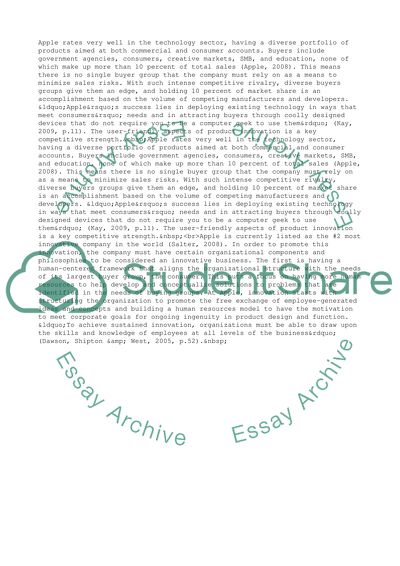Cite this document
(Innovative Organisations: Apple Inc Case Study Example | Topics and Well Written Essays - 2500 words - 4, n.d.)
Innovative Organisations: Apple Inc Case Study Example | Topics and Well Written Essays - 2500 words - 4. Retrieved from https://studentshare.org/business/1735675-innovative-organisations
Innovative Organisations: Apple Inc Case Study Example | Topics and Well Written Essays - 2500 words - 4. Retrieved from https://studentshare.org/business/1735675-innovative-organisations
(Innovative Organisations: Apple Inc Case Study Example | Topics and Well Written Essays - 2500 Words - 4)
Innovative Organisations: Apple Inc Case Study Example | Topics and Well Written Essays - 2500 Words - 4. https://studentshare.org/business/1735675-innovative-organisations.
Innovative Organisations: Apple Inc Case Study Example | Topics and Well Written Essays - 2500 Words - 4. https://studentshare.org/business/1735675-innovative-organisations.
“Innovative Organisations: Apple Inc Case Study Example | Topics and Well Written Essays - 2500 Words - 4”, n.d. https://studentshare.org/business/1735675-innovative-organisations.


